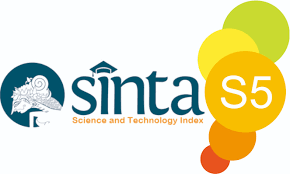REDUKSI MISPREPSI PULMONARY EMBOLISM (PE) PADA CT-SCAN ANGIOGRAFI PULMONARY
Abstract
Background: Pulmonary Embolism (PE) is the third highest cause of death in cardiovascular. Right ventricular failure usually occurs within the first few hours, leading to the occurrence of right ventricular dysfunction (RVD). Computed tomography pulmonary angiography (CTPA) is an imaging technique that is the gold standard in evaluating patients with suspected PE because of their high sensitivity and specificity. The presentation of Pulmonary CTA images in PE needs to be interpreted correctly so that there is no loss of diagnosis by radiologists and cardiologists. This article aims to find out how to minimize the presence of mispreseption in findings of PE cases using CT-Scan modalities with the CT Pulmonary Angiography protocol.
Methods: The type of research in this mini research is qualitative research with an experimental approach with measurements on the pulmonary arteries that have emboli, which are aimed at knowing the type and evaluating existing parameters to reduce misdiagnosis in PE patients.
Results: The results of identifying the type of emboli using ROI (Region Of Interestand) measurements of the right and left ventricles can be seen that the patient has acute pulmonary embolism. Precise parameter settings play a role in producing informative diagnostic images of Pulmonary CTA.
Conclusion: To obtain informative diagnostic images in cases of pulmonary embolism, it is necessary to pay attention in optimizing the procedures and parameters of pulmonary Angiography CT so that there is no misdiagnosis in patients.











